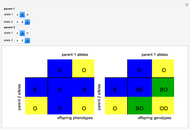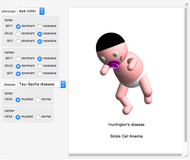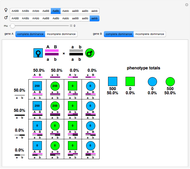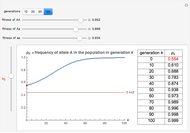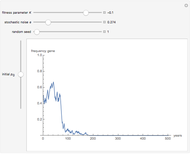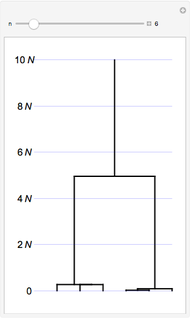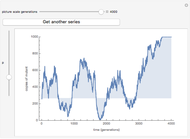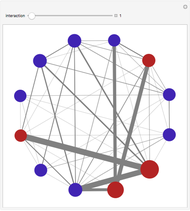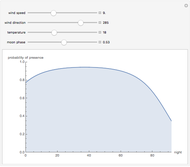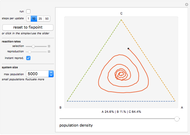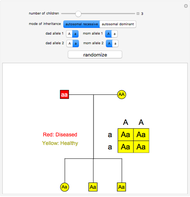Mendelian Inheritance Pedigree

Requires a Wolfram Notebook System
Interact on desktop, mobile and cloud with the free Wolfram Player or other Wolfram Language products.
This Demonstration lets you vary the genotypes of both first-generation parents. Based on the genotypes, a Punnett square shows all possible genotypes for their children. A two-generation pedigree is also shown; the genders of the children are decided randomly and the genotypes are assigned using a weighted probability based on the parents' genotypes. Depending on the mode of inheritance selected (autosomal dominant or recessive), a disease phenotype is associated with a genotype that carries negative alleles.
Contributed by: Tushar Dwivedi (July 2014)
(Mathematica Summer Camp 2014)
Open content licensed under CC BY-NC-SA
Snapshots
Details
The choices for the alleles define the genotypes for the first-generation parents. There are many modes of gene inheritance; the most common ones include autosomal recessive and autosomal dominant. Other modes include sex-linked inheritance and mitochondrial inheritance. To induce disease-like phenotypes, many genes are typically involved; this Demonstration displays a basic Mendelian inheritance mode, assuming Mendel's laws. In the autosomal recessive inheritance mode, two copies of a disease allele "a" are required to inherit the disease: "aa". On the other hand, having just one negative allele, "Aa", or not having any, "AA", leads to a healthy individual. In the autosomal dominant inheritance mode, only one negative allele "A" is required to inherit the disease. Thus, "AA" and "Aa" are both disease-causing genotypes, while "aa" would give a healthy individual.
Permanent Citation
"Mendelian Inheritance Pedigree"
http://demonstrations.wolfram.com/MendelianInheritancePedigree/
Wolfram Demonstrations Project
Published: July 30 2014









